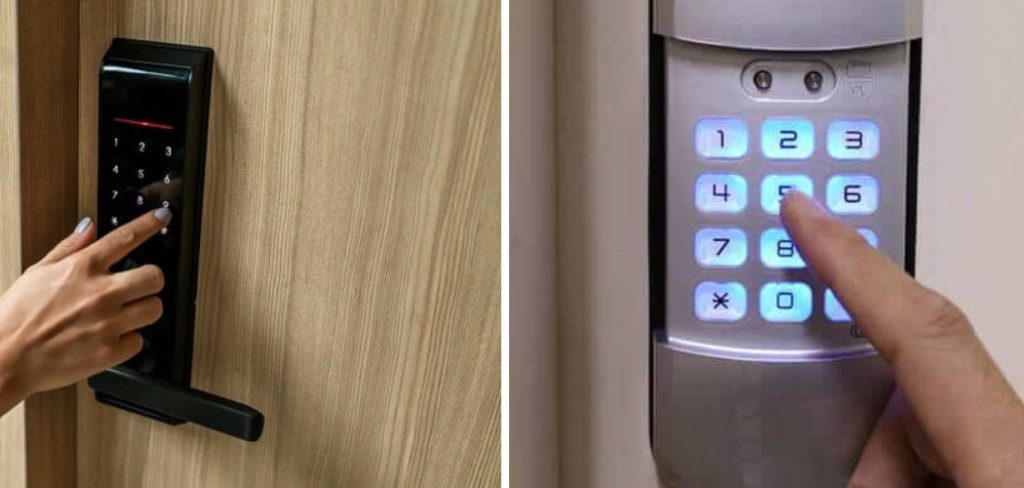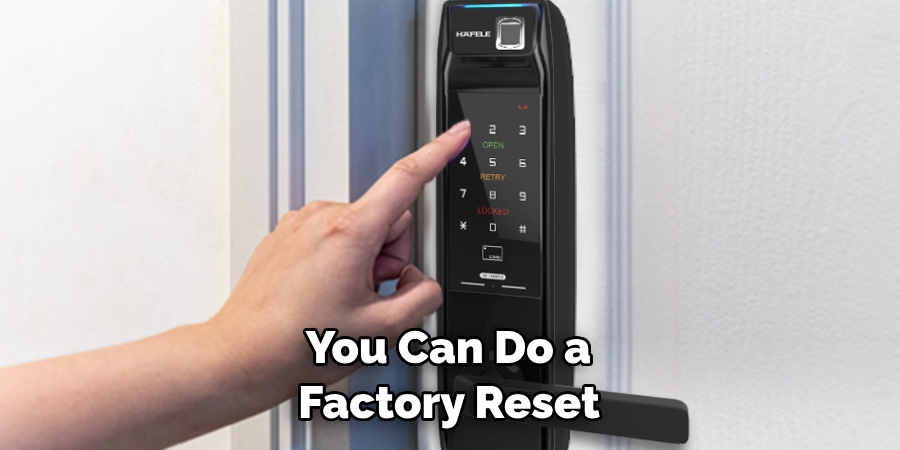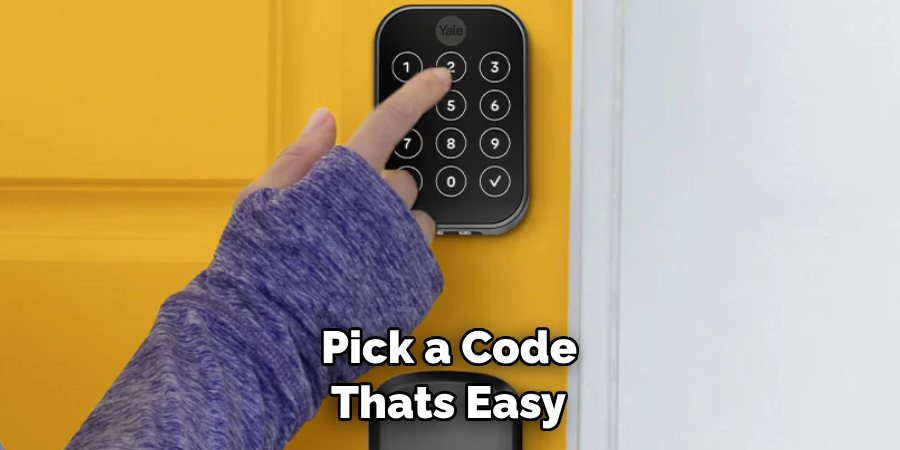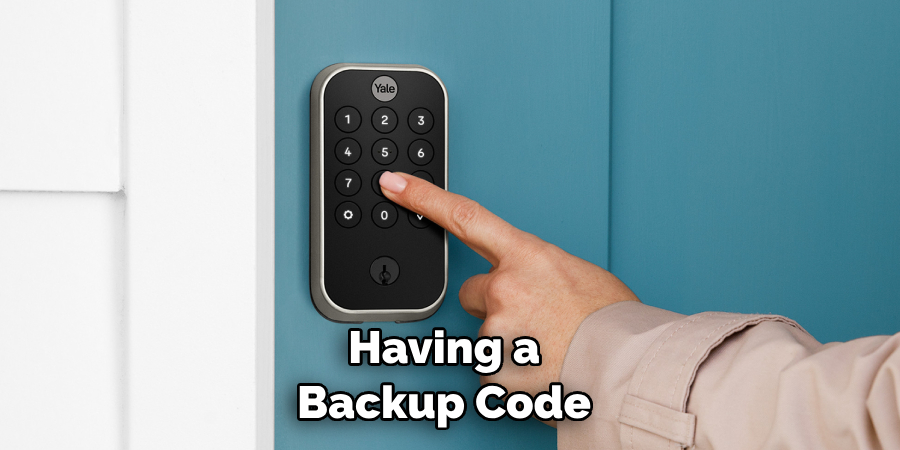Are you locked out of your keypad door lock? Have you forgotten the code to open it, or did someone else change it, and now you cannot get in? Don’t worry – there are ways to bypass a keypad lock without needing the original code. Unlocking a keypad lock may be simple, but it still requires practice and caution.

Whether you are a homeowner or a professional locksmith, here are some tips on how to unlock a keypad door lock without the code. Just make sure to always follow safety guidelines when working with locks and keys.
In this blog post, we will discuss some of the approaches that can be used to safely unlock a keypad door lock without having access to its previously set code. Read on to find out how!
What Will You Need?
Before you can unlock your keypad door lock, having all the necessary tools and supplies ready is important. Depending on the type of lock you are dealing with, some items that may be helpful include:
- Lockpicking tools such as tension wrenches and picks
- Screwdrivers for removing screws from the lockset
- Hammer and chisel for breaking the lock
- Bump key set (for certain types of locks)
- A flashlight to see in small crevices or dark areas
It is also important to be aware of any local laws related to lock picking. Possessing such tools may be illegal in some places unless you are a certified locksmith.
10 Easy Steps on How to Unlock a Keypad Door Lock Without the Code
Step 1. Identify the type of lock:
The first step to unlocking a keypad door lock without the code is to identify the type of lock you’re dealing with. Different brands and models may have different unlocking methods. This will help you decide which tools you’ll need and which technique to use.
Step 2. Check for any visible issues:
Before proceeding with any unlocking techniques, it is important to check for any physical damage or malfunctions that may be causing the lock not to work properly. Look closely at the keypad and see if there are any visible wires that have come loose, buttons that are stuck in place, or faulty batteries that need to be replaced. If the issue is minor, fixing it may be enough to get the lock open without needing to bypass it.
Step 3. Try the factory reset:

If the lock appears to be in good condition, you can do a factory reset. This is usually done by pressing and holding down a specific combination of buttons for a certain amount of time – consult your owner’s manual or conduct an online search for instructions specific to your lock model. Be careful when doing this, as it may reset the lock’s code, and you won’t be able to get back in without knowing what the new code is.
Step 4. Try Picking the Lock:
If a factory reset doesn’t yield the desired result or isn’t an option, you can try picking the lock. This requires some skill and the appropriate lock-picking tools. Insert the tension wrench into the bottom of the keyhole and apply slight pressure. This should hold the pins in place once they have been moved. Next, insert a pick into the top of the keyhole. Use the pick to push up the pins within the lock. Once all the pins are pushed up, the tension wrench can be used to unlock the door fully. Remember, lock picking should only be performed as a last resort and should be done in compliance with local laws and regulations. This method might not work for all keypad locks.
Step 5. Bump the Lock:
If picking the lock doesn’t work or isn’t an option, you can try the bumping technique. This method involves inserting a specially cut key, known as a bump key, into the lock and then ‘bumping’ it with a mallet or hammer. This causes the pins in the lock to jump to their unlock position, allowing you to turn the key and open the lock. However, remember that lock bumping requires practice and can potentially damage the lock. Use this method as a last resort and comply with all local laws and regulations.
Step 6. Use a Professional Locksmith:
If none of the above methods work or if you’re uncomfortable trying them, hire a professional locksmith. Locksmiths have specialized tools and training to unlock various locks without causing damage. In addition, a locksmith can help you reset the lock and create a new code, ensuring your security in the future. It’s essential to provide the locksmith with as much information as possible about the lock, including the brand and model, for the best possible service.
Step 7. Reset Your Lock:

Once you’ve managed to unlock the keypad door lock, it’s time to reset the code to prevent future lockouts. Different models have different methods for resetting, so refer to the owner’s manual or conduct an online search for the specific instructions for your lock. Generally, this will involve entering a master code and your new desired code. Be sure to pick a code that’s easy to remember but hard for others to guess. Finally, test the new code several times to ensure it works properly.
Step 8. Regular Maintenance:
After resetting your keypad lock, conduct regular maintenance to avoid future lockouts or malfunctions. This includes frequently changing the batteries if your keypad lock is battery operated, cleaning the keypad surface to prevent stuck keys, and periodically changing your lock code for security purposes. Regular maintenance will prolong the lifespan of your lock and keep it functioning optimally.
Step 9. Backup Plans:

To avoid future lockouts, it’s wise to have a backup plan. This could be a spare key discreetly placed outside of your property or leaving an extra key with a trusted neighbor or family member. For keypad locks, having a backup code that you change regularly alongside your main code might be beneficial. Always ensure that your backup plans abide by recommended security practices to prevent unauthorized access to your property.
Step 10. Review and Learn:
After successfully unlocking your keypad door lock without the code, reviewing the process and learning from the experience is important. This might involve identifying how you forgot the code and implementing measures to prevent a similar occurrence. Consider writing the code in a secure place or using a password manager. Additionally, you had to resort to more drastic measures like lock picking or bumping. In that case, you should evaluate the security of your current lock system and possibly upgrade to a more secure one.
By following these steps and staying mindful of your security measures, you can successfully unlock a keypad door lock without the code. With the right tools and techniques, you can quickly get back into your property without damaging it or compromising its security.
5 Additional Tips and Tricks
- If you don’t know the code, try pressing any random sequence of numbers on the keypad. The door may not be properly programmed and will open without a code.
- Check for other access points to the room or building, such as an emergency exit or open window.
- If possible, contact the owner of the keypad door locks to ask for the code.
- If there is an emergency, contact local authorities, who can help you gain access to the locked area if necessary.
- If none of these solutions work, it may be time to hire a professional locksmith or security expert to assist you in unlocking the keypad door lock without knowing the code.

These tips should help you access a keypad door lock without the code, but always remember to take precautions and use caution when entering locked areas. Remember that it’s better to err on the side of caution than risk damaging the lock or breaking into an area you are not authorized to be in. With a little bit of
5 Things You Should Avoid
- Never force a keypad door lock open, as this could damage the mechanism and leave you locked out permanently.
- Don’t attempt to pick the lock or use any other tool not designed for unlocking security devices, such as keypad door locks.
- Avoid copying codes from others, as this could result in legal issues if caught.
- Don’t try to enter any building or area without the authorization of the owner or police, as this could result in criminal charges.
- Never share your keypad door lock code with anyone else, as this can be a security risk and lead to unwanted access by unauthorized individuals.
By following these simple tips and avoiding the things you should not do, you can help ensure your safety and security when trying to unlock a keypad door lock without the code. Always remember that it’s better to be safe than sorry!
Conclusion
Keypad door locks provide a convenient and secure way to enter buildings or homes. However, when codes are forgotten, entering without destroying the lock can be difficult. Thankfully, several steps can be taken to unlock a keypad door lock without the code. Whether it’s using a factory reset code on older locks or even DIY solutions like super glue and plastic cards, there’s sure to be an approach that will satisfy your needs.
Of course, it’s always best to have a backup plan if the unfortunate happens and you forget your code for one of these keypad locks. Additionally, consider speaking with a professional locksmith if all else fails– they can often get entry back quickly while working with the lock’s original software.
Whatever method you choose, it’s important to ensure you understand how to unlock a keypad door lock without the code before attempting any keypad lock hack or unlocking approach.
About
Safety Fic is a distinguished figure in the world of Diy design, with a decade of expertise creating innovative and sustainable Diy solutions. His professional focus lies in merging traditional craftsmanship with modern manufacturing techniques, fostering designs that are both practical and environmentally conscious. As the author of diy, Safety Fic delves into the art and science of Safety Fic-making, inspiring artisans and industry professionals alike.
Education RMIT University
(Melbourne, Australia) Associate Degree in Design (Safety Fic) Focus on sustainable design, industry-driven projects, and practical craftsmanship. Gained hands-on experience with traditional and digital manufacturing tools, such as CAD and CNC software.
Nottingham Trent University
(United Kingdom) Bachelor’s in diyfastly.com and Product Design (Honors) Specialized in product design with a focus on blending creativity with production techniques. Participated in industry projects, working with companies like John Lewis and Vitsoe to gain real-world insights.
Publications and Impact
In diy, Safety Fic his insights on indoor design processes, materials, and strategies for efficient production. His writing bridges the gap between artisan knowledge and modern industry needs, making it a must-read for both budding designers and seasoned professionals.
